big role in life flora plays humidity. It is measured with hygrometers of various types. It is useful to know that normal room air with central heating operating has a relative humidity in the range of 20-40%. At the same time, it is well known that a humidity of 60-75% is more suitable for people and plants. Too dry air dries the mucous membranes of the nasopharynx, which leads to a decrease defensive forces organism.
The area in which the plants are to be stored during the winter should be shaded as little as possible so as not to damage the vegetation process. There are two things to consider: the type of plant, if it is sensitive to cold or can withstand better, and secondly, to ensure optimal lighting. At this time, of course, the duration of sunlight decreases, the day decreases, and poor light can also drastically affect some plants. Lack of light causes thinning of the plant, creates very thin stems or shoots, and finally, these plants can break down, they can die.
Many indoor plants come from tropical forests, and therefore are accustomed to high humidity. Often the air in our homes does not meet the level of humidity that our green pets need. Low air humidity increases transpiration and evaporation of water from the substrate, which can lead to desiccation, which is fatal for plants. The lower the air humidity, the stronger the evaporation of water from leaves and soil, the more often watering is required. To make your houseplants stay on our windowsills more comfortable and healthy, you need to spray them regularly. It is necessary to spray the plant from all sides, but in no case when direct sunlight falls on it. Drops of water on the leaves form a prism effect and cause burns.
These flat flowers are varied, from sting to ficus and philodendron. It is necessary to take into account the requirements of each type. Vegetation factor deficiency affects harmony, normal development plants, and that can make him suffer or make him die, says researcher Kostel Vanavtoru.
However, providing temperature and brightness conditions is not enough, the set of measures that are useful for plants in the cold season is much more complicated. For example, Costel tells Vanaktor, plants should be watered to measure, depending on the temperature or light in the room, and the type and type of soil in which the root is rooted.
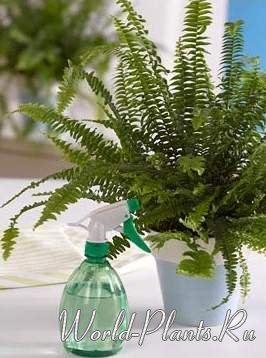
Spraying not only temporarily increases the humidity of the air, in hot weather it saves the plant from overheating, protects against infection by red spider mites and cleans leaves from dust. By the way, for the prevention of pests and for cleaning the plant from dust, a warm shower is very useful, about once a month. At the same time, do not forget to close the earthen lump with plastic bags from water.
Humidity is adjusted according to the room temperature. You should be aware that the high temperature inside makes evaporation faster, and watering should be done more often. However, daily watering is not recommended. In addition, if the light is bad, the amount of water drops to a certain extent to avoid even more imbalance. The substrate in which plant roots develop is very important. Many flowers that are now sold and grown in apartments have a lot of peat. We understand that it is peat, not earth, when the plant is light, because peat is like a sponge.
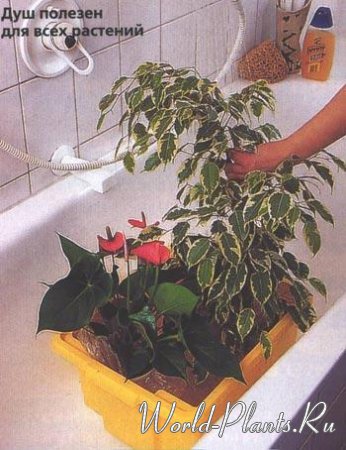
The rest of the time, once a week, be sure to wipe the leaves with a damp soft cloth.
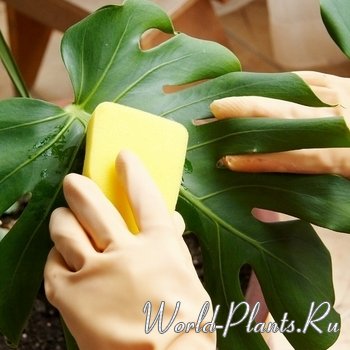
Humidity should be directly proportional to temperature - the higher the temperature, the higher the humidity. If the room temperature decreases, then the humidity level also needs to be reduced.
It should be known that these pots lose water quickly. Peat has the ability to hold a large amount of water, but quickly loses it, and then you should see what kind of soil, what kind of pot in a pot. At the same time, watering is done more often, says Costel to Vannator.
And the pots must be carefully maintained to maintain a healthy plant during the cold season, when it is more vulnerable than in other seasons. Excess water can lead to root disease because plants absorb water and minerals in the soil through their roots. Few people know that plants in the root system and breathe. That's why we plant plants. And those in pots should be cut from time to time, with a little planter, loose, because if the soil is crushed, the roots suffocate.
During summer and winter periods, the air humidity in our apartments can decrease by more than 50%. And this is hard to tolerate by most plants. To help them endure a difficult period, you need to spray the leaves of plants in the morning so that the leaves dry out by evening. And the opened flowers must be protected from water in order not to damage them.
You have seen that in an area where water flows, the plants wither and die. This is one and the same explanation, - explains Buzoy gardener. All houseplant protection rules are not standardized, Costel says to Vanauthor, but are recommended by species. For example, violets "Parma", those that now bloom well in winter, are not wet in a pot, but in a saucer, down. The philodendron, which makes some aerial roots, also has its claims. Many have a tendency to cut these roots, but they need to be preserved because they so absorb water vapor from the air, but also respire.
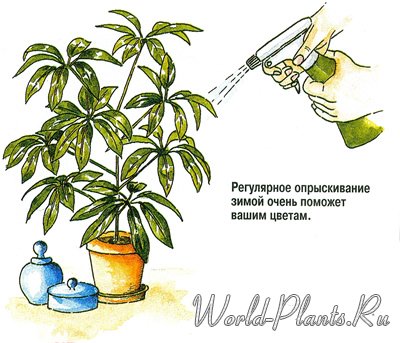
During the heating season, houseplants often suffer from dry air. Plants in a dry atmosphere are forced to evaporate more moisture - this leaves the leaves drooping and curling, and the plants themselves often fade, become dull, and the most sensitive to dry air even shed their leaves. To an inexperienced lover of home flowers, it may seem that they are dead. In this case, you can put the pots on a layer of expanded clay, poured into a pan and filled with water to half the thickness of its layer. This is the best way to ensure sufficient humidity. The spongy structure of this material is able to retain and gradually evaporate moisture into the air surrounding the flowers for a long time, which is required for their successful maintenance. In this case, you can do without spraying plants.
Their healthy conservation also includes controlling very small pests such as spiders, aphids, mussel water that can shake the plant, says Costel Vanavtorou, a researcher at the Buzau Experimental Station. The plant should not be placed in an area that is too cold or too hot.
Check for pest infestation. Make sure the plant has enough light. Here are some of the most common houseplants and tips on how to care for them. Because roses love light, you should be somewhere in front of a window, either south or east, where they can get a few hours of sunlight, 5 or 6 hours, preferably in the morning when it doesn't get too hot. The ideal soil for these dwarf roses is a neutral pH. The rose also needs a lot of light and high soil moisture.

It is now possible to humidify the air in rooms with the help of decorative indoor fountains, special industrial air humidifiers. Moreover, the fountains can be both large, placed on the floor, and desktop.

They hibernate in summer, dropping all leaves, but in autumn the growth cycle resumes so that early winter begins and early spring. This is a perennial plant, ideally expressed in shady and cool places. The soil requires continuous watering with water containing lemon. It is planted in late summer as it only blooms during the cold season.
It is a tropical plant whose inflorescence lasts about 3 months, provided that it remains in a bright place, but is not beaten directly by the sun and wetted for 7-10 days. The pot can not be changed for up to 2 years. A succulent plant that grows mostly indoors but can be pulled out if frostier conditions are not available. Planting is done in a well with good drainage in a mixture of peat and sand, and it is rarely wetted. It can grow up to one meter in height and blooms in summer.

You can also hang evaporator vessels of various designs from the batteries. They are very good-looking: stylishly made of ceramics, they serve as an interior decoration, while improving the air environment at home. The easiest way is to put vessels with water near the batteries, which you will water your plants in a day. The humidity in the room will increase if winter period hang up wet towels.
A perennial plant that can be left out even in summer because it prefers direct, abundant sun and needs to be planted in a mixture of sand and earth. In winter, you can not water more than once a month. The roots of cacti and succulents grow more horizontally than they do in deep water, so they need short, wide pots.
It will grow slower and the leaves will be yellow! Azalea does not like scale in tap water. Large pots should be used for optimal root growth. Gerberas love sun and air and should be watered generously during the flowering period, which runs from summer to fall.
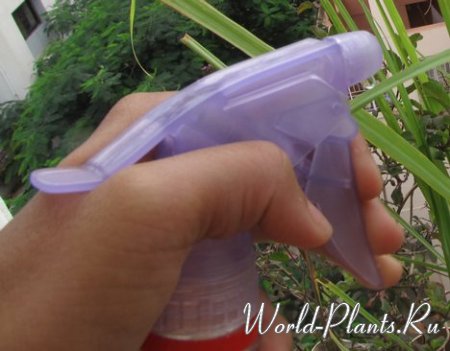
Humidity in a dry apartment can be increased by spraying indoor flowers from a spray bottle. But not everyone loves such a shower: plants with pubescent (velvet) leaves, such as pelargonium, synningia, saintpaulia, coleus, tidea or gloxinia, cannot be sprayed, as this causes yellow or white spots to form on their leaves and they can rot . Dust is removed from them with a soft dry brush. At the same time, these are moisture-loving plants, so they cover the pot with wet moss or put the pot in a pan with moistened sand. In this way, you will create the humidity around the plants that they need.
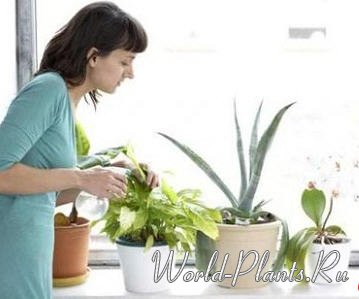
Sufficient air humidity helps the aerial parts of plants to exist, preventing them from drying out. Some types of plants (monsters, philodendrons, syngoniums, etc.) also have aerial roots that can absorb moisture from the air and additionally feed the plant's body with it.
Do not arrange the plants alone, they will be more comfortable together. The thicker the plants grow, the greater the surface of the earth (wet) evaporates moisture. Plants help each other to survive. Combine them on a pallet with 2 cm of pebbles. Pour water into the pan so that it covers only the lower stones. Put the pots on the pebbles. Leave free space between them, because with a very dense arrangement, another nuisance can happen - fungal diseases. Naturally, the more flowers live in a room, the more humid the air in it: watering and evaporating moisture with leaves make the atmosphere of the rooms healthier and more comfortable for both plants and their owners.

Small plants can be kept in glass aquariums - florariums, immersed in sphagnum or other substrate.

With light spraying in such balls, it is easy to maintain high humidity.
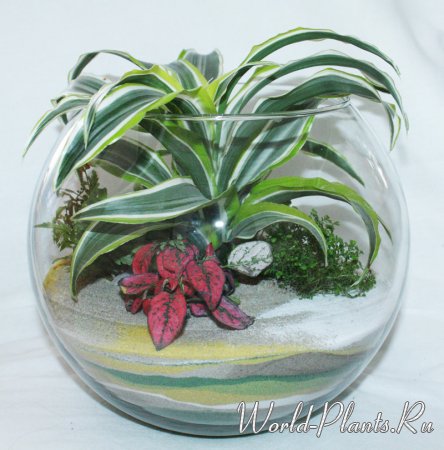
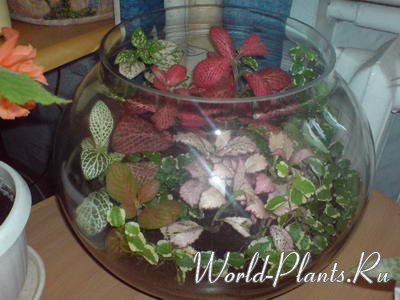
However, optimal humidity can only be achieved in a climate-controlled room greenhouse.
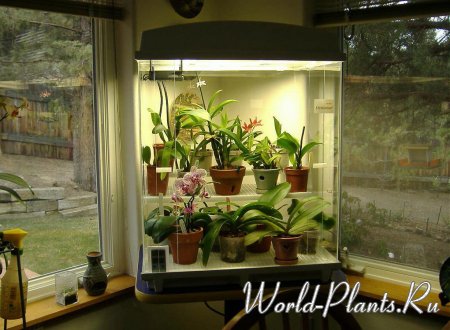
Sometimes one particular plant needs to urgently increase the humidity in order to "revive" it. The plant must be watered, sprayed with water and covered with a plastic bag. Monitor the humidity, do not forget to ventilate (so that mold does not appear and the roots do not rot). Usually, watering the soil will not be required soon.
Take a close look at your flowers. If you find dry edges on the leaves, be sure to place containers with water next to the plants, and even better - with wet sand, expanded clay or moss. Then the moisture will not evaporate quickly.
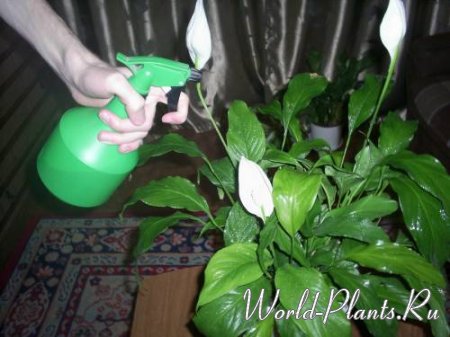
The provision of a plant with water affects its appearance and life support features. Based on this, the following plant groups:
Xerophytes - plants of dry habitats. They have a specific look and a number of special devices. Xerophytes are found in places with a dry hot climate (dry steppes, deserts and semi-deserts). Dry conditions can be observed even in rainy tropical forests - for example, many epiphytes growing on the upper branches of tall trees experience a lack of moisture. The features of xerophytes are a decrease in the size of the leaves, their pubescence, the presence of a thick skin, a wax coating on it, numerous veins and stomata. Some xerophytes have a highly developed root system or special organs that store water. Xerophytes, unlike hygrophytes, can regulate water evaporation well. The best known types of xerophytes are succulents, hard-leaved, thin-leaved and false xerophytes.
Hard-leaved xerophytes withstand drought thanks to a powerful root system. These are mainly shrubs and trees (for example, saxaul).
thin-leaved xerophytes - plants with a root system penetrating to a depth of 10-15 m.
False xerophytes - annual or perennial plants with a very fast development cycle. By the onset of the summer drought, they have time to form seeds and go into a dormant state.
hydrophytes - aquatic plants that are completely submerged in water or have leaves floating on the surface.
Hygrophytes- plants of wet habitats (rainforests, swamps, coasts of water bodies). These are herbaceous species with a weak root system, a high ability to evaporate water, and an underdeveloped mechanical tissue. They absolutely cannot stand even a short-term drying of the substrate, they love moist air. Outwardly, they are characterized by large thin leaves, sometimes with a drip tip, along which water flows (for example, some ficuses), special outgrowths on the leaves to enhance the evaporation of water (for example, imperial begonia).
Mesophytes - Plants requiring medium humidity conditions. This group includes most indoor plants. For many plants grown in room conditions, humidity of the order of 70-80% is needed, while usually the humidity is of the order of 50%. Tropical species with thin delicate leaves (fittonia, arrowroot, selanginels, ferns) need an air humidity of about 90%. To maintain high air humidity, especially in winter, it is very useful to use household humidifiers.
succulents - plants with succulent, fleshy leaves or stems (euphorbia, cacti, agaves, etc.) that store water in tissues. Succulents grown indoors do not suffer from dry indoor air, unlike other plants.

Outcome:
1. To spray plants, purchase a spray bottle with a fine nozzle: water should turn into mist on the leaves, and not squirt.
2. Use only soft warm water for spraying.
3. You need to spray often, but the main thing is that the leaves dry out completely by night, otherwise fungal diseases of indoor plants may occur. The best time for spraying plants - in the morning, when the sun has already come out. If it is too hot and the plant suffers from dry air, you can additionally spray it during the day and evening.
4. In summer, be sure to spray the plants. As for winter, indoor air
overdried by central heating batteries. Rearrange the flower from the battery and spray it.
5. If the air temperature is low indoors or on the balcony in summer, do not spray the flower, otherwise it may freeze, and hypothermia does not have the most positive effect on the health of indoor plants.
In our homes, favorable conditions for a person - the average temperature all year round and low humidity- in fact, far from the most favorable for most plants. Fortunately, there are some plants that can tolerate such conditions. But you can easily increase the humidity level for the plants without affecting your comfort.
Humidity helps plants control fluid levels in their tissues. Small pores on the leaves facilitate the exchange of oxygen and carbon dioxide with the environment, as well as the evaporation of water during the life of the plant. Depending on the level of humidity (and temperature), these pores open or close, controlling the amount of liquid that evaporates. At a high level of humidity, the pores open wide: it is not dangerous for the plant to lose water in a humid environment. Conversely, if the air is too dry, water evaporates from the leaves and from the soil, which can harm the leaves, whose tissues must remain constantly moist.
Humidity level in the house rarely exceeds 50%. Of course, humidity varies with the weather, but in general, humidity levels in homes are low. However, for indoor plants, the ideal humidity is 60%. Some, like tropical plants, like even more humidity. And desert plants grow well in 30% humidity.
Different plants can withstand different levels humidity. But the consequences of abnormal (low) humidity are always the same, regardless of the type of plant. The tips of the leaves turn brown, the buds do not open, the flowers wither too quickly, the lower or oldest leaves turn yellow and die prematurely, the plant stops growing.
Plants from arid regions do well with low humidity in homes, if there are no other adverse factors: inappropriate temperature levels or the amount of light. Many tropical plants do well if they have hairy, fleshy, or scaly leaves. Such leaves retain moisture in dry conditions. Examples of such plants are begonia, bromeliad, cactus, wine raffia, howe Forster.
Ideally, you need to choose indoor plants that grow well in your home environment. However, even the most hardy plants can suffer from too much low level humidity, for example, if you are trying to grow a beautiful flower that is used to higher humidity. You can increase the level of humidity in a certain place without inconveniencing yourself at all. Portable humidifiers can increase the humidity in one room. You can also spray the plants with water. Try to put all the plants in one place so that the evaporation from the leaves and soil will increase the humidity. Remember that the closer to the bathroom or kitchen, the higher the humidity level.
